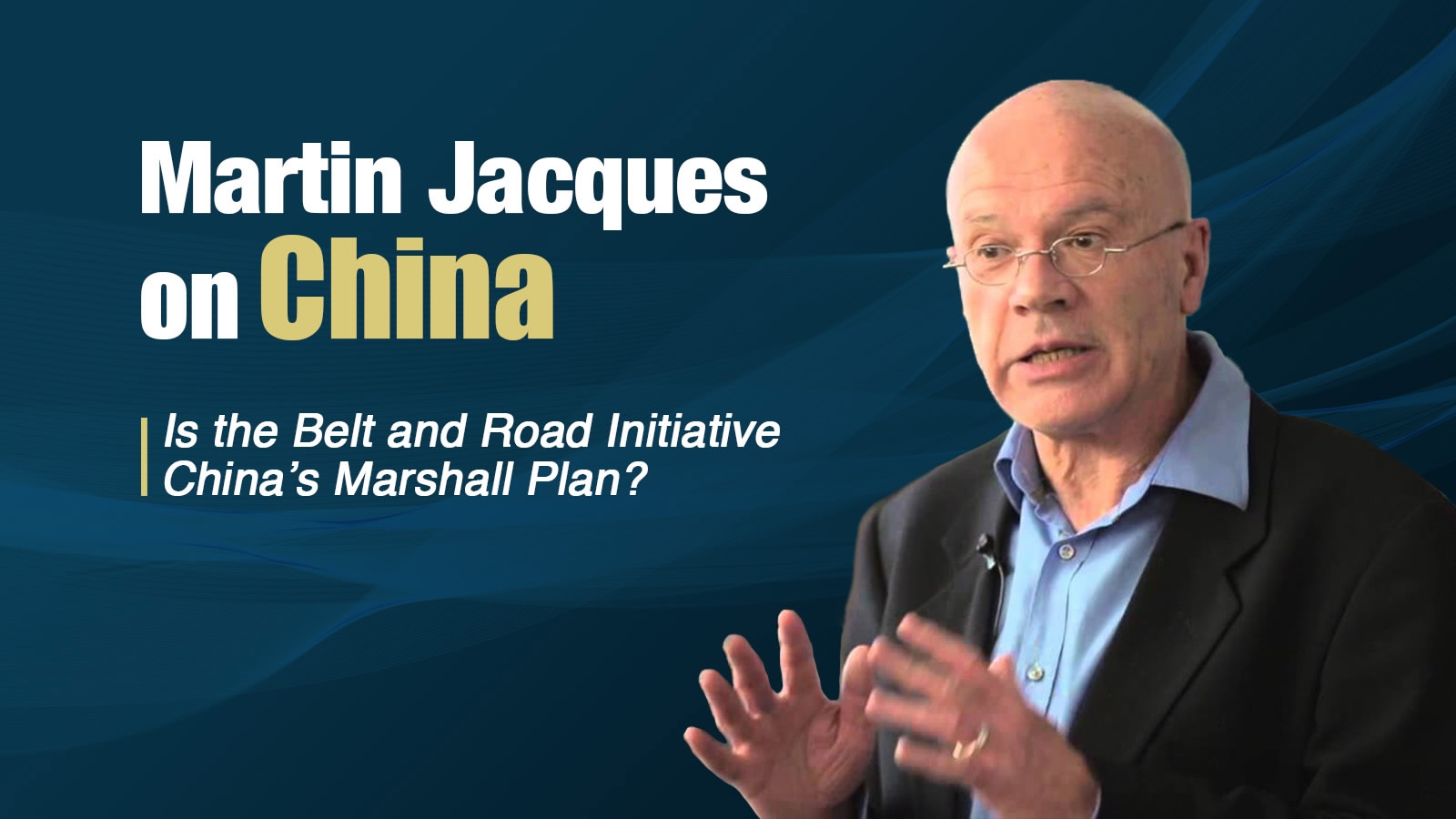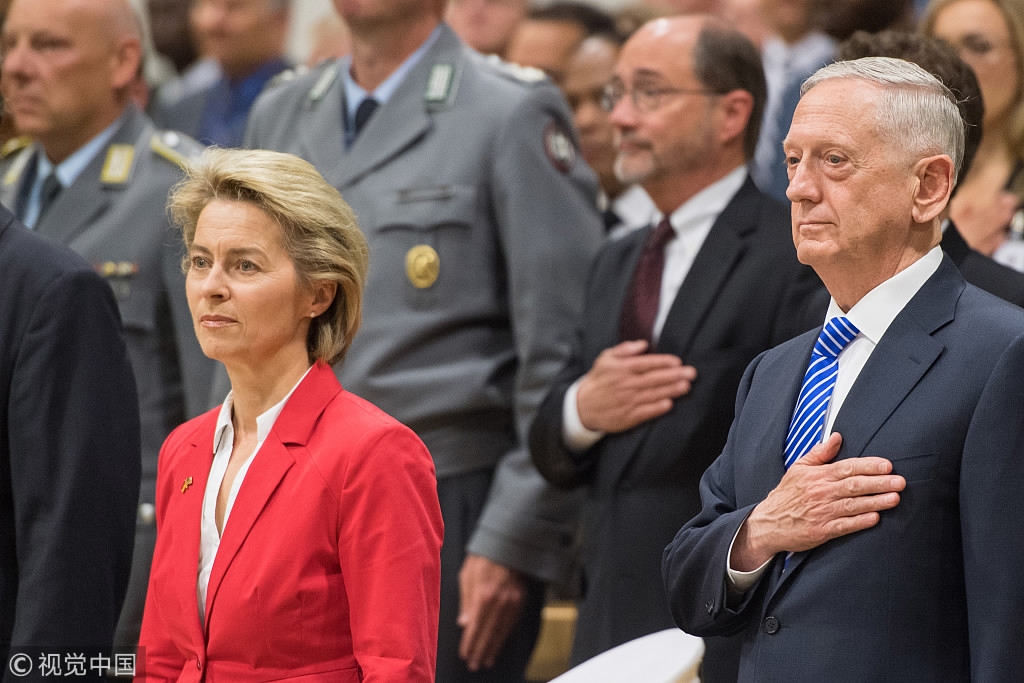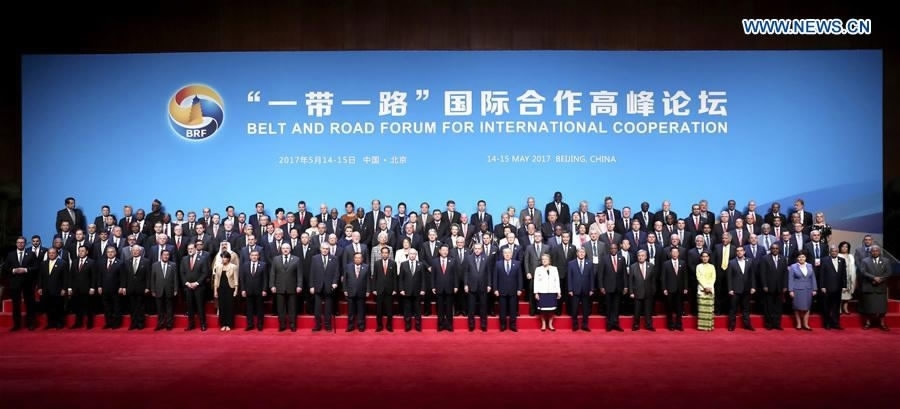
Opinions
18:12, 27-Dec-2017
Martin Jacques on China: Is the Belt and Road China’s Marshall Plan?
CGTN

Editor’s note:
The China-proposed Belt and Road Initiative is a continent-spanning project that aims to boost inter-connectivity between China and more than 60 other countries in terms of trade and infrastructure. Various commentators have compared it to the US’ Marshall Plan, which looked to restore long-term prosperity in a post-war Western Europe.
With the 900-billion-US-dollar Belt and Road Initiative dwarfing the Marshall Plan when it comes to cost and scale, "Martin Jacques on China" looks at the big question: is there any comparison between the two plans in terms of purpose?

US Defense Secretary James N. Mattis and German Defense Minister Ursula von der Leyen attend the celebration of the 70th anniversary of the Marshall Plan at George C. Marshall European Center for Security Studies on June 28, 2017 in Garmisch-Partenkirchen, Germany. /VCG Photo
US Defense Secretary James N. Mattis and German Defense Minister Ursula von der Leyen attend the celebration of the 70th anniversary of the Marshall Plan at George C. Marshall European Center for Security Studies on June 28, 2017 in Garmisch-Partenkirchen, Germany. /VCG Photo
It is not uncommon to hear comparisons made between the Marshall Aid Plan at the end of the WWII and the Belt and Road Initiative, and I think this is understandable because they were both extremely ambitious.
In the American case, it was to transform Europe at the end of the WWII after the destruction of the previous years. In the Chinese case, it is to transform the Eurasian landmass. But I think beyond that the similarities are not so strong.
Marshall Aid was, first of all, on a much smaller scale, at today’s prices, I would guess that the Marshall Aid was about one-twelfth the size of the Belt and Road Initiative.
The other great difference actually is the purpose. The purpose of Marshall Aid was to transform Europe at the end of the WWII, and that was really seen as part of the reviving of the West at the beginning of the Cold War.

Chinese President Xi Jinping and other delegates attending the Belt and Road Forum for International Cooperation pose for a group photo in Beijing on May 14, 2017. /Xinhua Photo
Chinese President Xi Jinping and other delegates attending the Belt and Road Forum for International Cooperation pose for a group photo in Beijing on May 14, 2017. /Xinhua Photo
The Belt and Road initiative is something completely different. It is aimed at the largest landmass in the world, the Eurasian landmass, which is overwhelmingly populated by people in developing countries, many of whom are quite poor. So the purpose of the Belt and Road is the transformation of the conditions of a large slice of humanity who lives in very poor conditions up until this day.
So the geopolitical nature of the two projects is very different: Marshall Aid, the beginning of the cold war; Belt and Road Initiative, the transformation of the developing world.
(British journalist and academic Martin Jacques, the author of global bestseller When China Rules The World, is one of the leading Western commentators on Chinese affairs. He is a Senior Fellow at Cambridge University and a Visiting Professor at Fudan and Tsinghua universities. Martin Jacques on China is an eight-part video series discussing issues affecting China’s future.)

SITEMAP
Copyright © 2018 CGTN. Beijing ICP prepared NO.16065310-3
Copyright © 2018 CGTN. Beijing ICP prepared NO.16065310-3